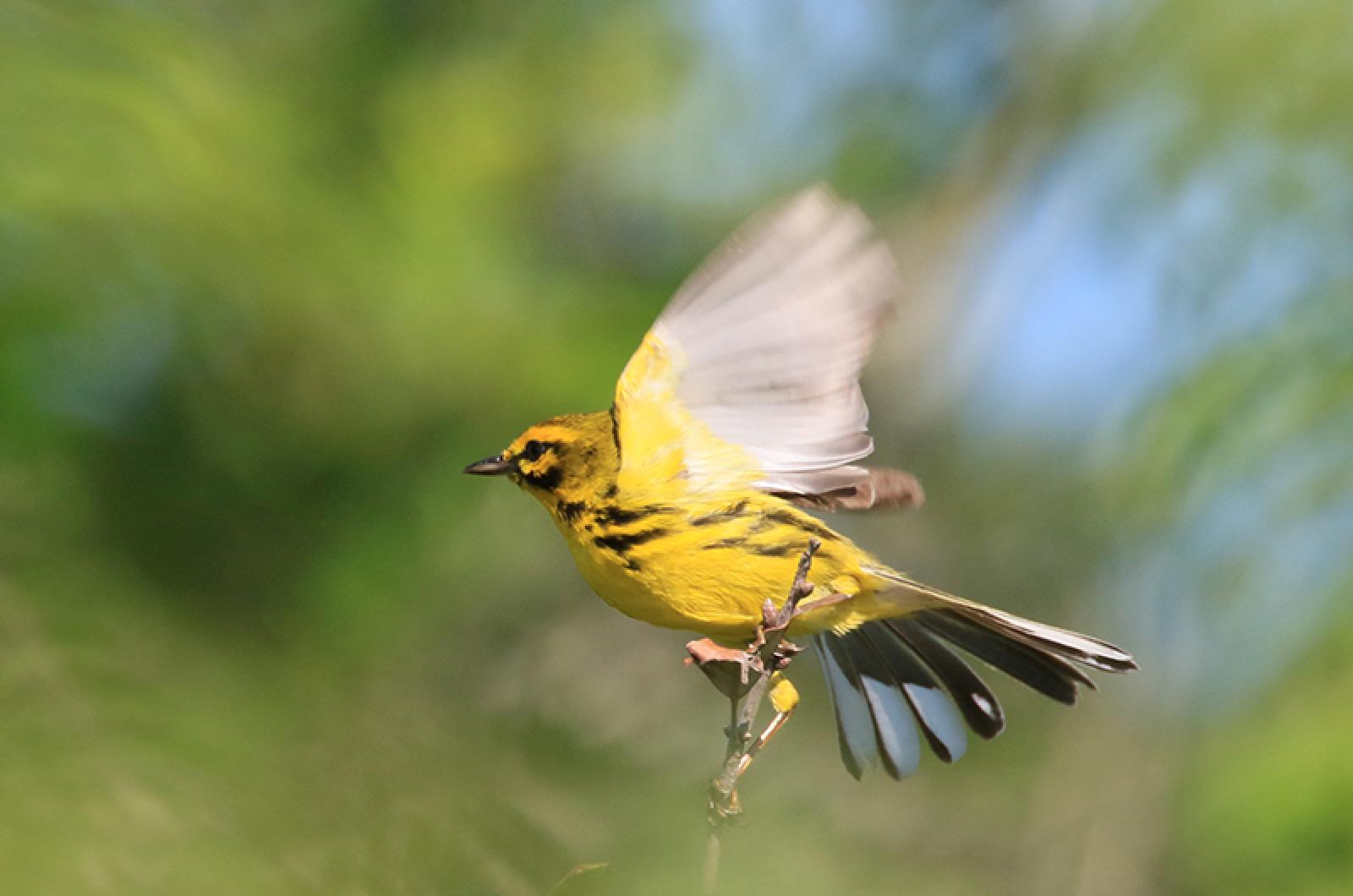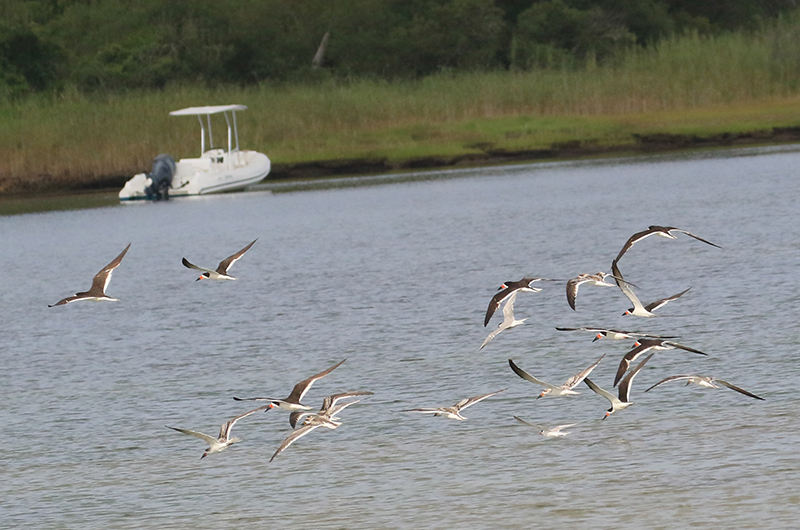The Island has experienced two high-profile strikes with successful ends this year. It would be nice if a bird striking a window also shared a successful ending, but that is often not the case.
When outside, if you look at a window you will see reflections of trees or the sky. A bird sees the same thing, and trees or sky are things that birds routinely fly through. Although you know that glass is there, you do not see it. The bird does not know what glass is and does not see it. The resulting unexpected collision with the window is often fatal, as the sudden impact between their head and the glass often causes brain damage from which they do not recover.

Although it is hard to quantify this mortality, David Sibley (of bird guide fame) reports that these collisions cause close to one billion bird deaths every year! This mortality includes birds that are confused by bright city lights, which mess up their internal navigation systems so they fly in circles around brightly-lit buildings. Eventually they strike a window. This mortality caused by man’s structures is in addition to the many natural causes of death.
So what can we do? There are programs in cities (for example, Lights Out Boston) that urge occupants of large buildings to turn off their office lights at night when they are not there and songbirds are migrating. (Southbound migration is starting to peak as it is now the beginning of Labor Day weekend. Yikes! Already?)
Homeowners can also reduce outdoor lighting, thereby saving birds’ lives while simultaneously reducing their electric bill! We can also install owl and hawk silhouette decals in our windows. I am convinced that these window decals have reduced window strikes at my house. Another promising solution, especially for new construction, is to install the windows at an angle so the window reflects more ground and less sky. Placing your bird feeder closer to the window may reduce a bird’s injuries because the speed of a startled bird striking the window will be lower.
Bird Sightings
The most interesting species sighted this week is a Forster’s tern, which is closely related to our common and roseate terns. On August 25, the group of Susan Whiting, Lanny McDowell, Nancy Weaver, Luanne Johnson, Margaret Curtin and Pete Gilmore spotted one of them at Tisbury Great Pond. Their black cheek patch makes them quite distinctive at this time of the year. The day before, it was Liz Baldwin, Ms. Whiting, Mr. McDowell and Warren Woessner that found a pectoral sandpiper on Little Beach. Pete Gilmore spotted one of these medium-sized sandpipers at Sepiessa Point on August 22.
Pat Hughes and Hal Minis joined Ms. Whiting at Quansoo on August 24, where their highlights included white-rumped sandpiper, five American oystercatchers, two piping plovers and a crisply plumaged young-of-the-year Savannah sparrow.
Happy Spongberg has been enjoying watching a family of six great crested flycatchers as they fly around her yard. On August 24, Marty Moore joined Ms. Spongberg for a walk along Short Cove, where they observed black-bellied plovers, short-billed dowitchers, greater yellowlegs, several semipalmated plovers and a lot of least sandpipers.
Most of us really enjoy seeing black skimmers, and now is the time to see them before they depart for more southern climes. Multiple observers report up to 55 of them on Little Beach, but that is not the only place to see them, as Morgan and Rob Douglas spotted a flock of two dozen skimmers on the Edgartown side of the big bridge on August 26. They have also been seen recently on Norton Point and Tisbury Great Pond.
Steve Allen reports that the immature little blue heron is still hanging out at Felix Neck along with both snowy and great egrets. Quite the show of white wading birds!
Adele Dreyer spotted an adult laughing gull on State Beach on August 22.
On the songbird front, Sarah Mayhew got several unusually close-up views of a red-eyed vireo at eye-level near her deck on August 25. Usually they are much higher in the tree tops. She also observed a prairie warbler and a female redstart in her yard on August 23.
Sofia Anthony reports the following from her Oak Bluffs yard: noisy catbirds, noisier blue jays, stunning cardinals, numerous chickadees, lovely titmice, red-bellied, downy and hairy woodpeckers and ruby-throated hummingbirds.
Sheilah Hughes had Baltimore orioles and flickers in her yard on August 25.
Stan and Marie Mercer have been watching a bald blue jay in their yard for a few days. It is a normal-looking and normal-sounding blue jay, except that its head lacks almost all feathers. Allan Keith stopped by to confirm its identity and suggests that its nearly-naked head may be due to disease or a failure of the head feathers to develop properly. In recent years, a number of male cardinals have also sported a similarly bald head.
I inadvertently left out a performer at the upcoming “Avian Improv” show at the Edgartown Library on Sept. 28 from 2 to 3:30 p.m. Warren Woessner will be reading some of his poetry, in addition to Lanny McDowell’s slide show of birds accompanied by the music of pianist David Stanwood.
Southbound migrants are showing up frequently now! Please report your sightings to birds@mvgazette.com.
Robert Culbert is an ecological consultant with Nature Watch LLC living in Vineyard Haven.







Comments (1)
Comments
Comment policy »